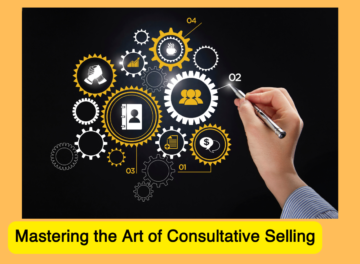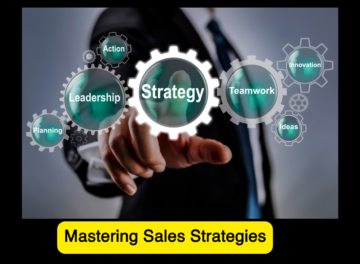Top 10 Sales Strategies to Boost Your Revenue


Introduction: Understanding the Importance of Effective Sales Strategies
In today’s competitive market, I recognize how imperative it is to have well-crafted sales strategies. These strategies are not just abstract concepts; they directly impact our bottom line. Effective sales strategies enable me to:
- Identify target customers accurately
- Tailor approaches to meet specific needs
- Optimize time and resources efficiently
Moreover, I notice that having a clear strategy helps me keep the sales team motivated and focused. It ensures that every effort is aligned with our business goals, thereby driving better results and fostering customer satisfaction. This understanding lays the groundwork for exploring the top sales strategies to boost revenue.
Deep Dive: Researching Your Market and Customer Needs
To boost revenue, I must delve deep into understanding the market and customers. First, I analyze competitors’ strengths and weaknesses to identify gaps. Next, I survey target audiences to understand their needs and preferences.
Key Steps:
- Identify top competitors
- Analyze their products, pricing, and customer feedback
- Customer Surveys
- Design targeted surveys
- Collect and analyze responses
- Market Trends
- Regularly review industry reports
- Keep an eye on emerging trends
Combining these insights helps me tailor sales strategies effectively, ensuring they resonate with potential buyers.
Leveraging Data Analytics for Sales Planning
I rely on data analytics to identify key sales opportunities and forecast trends. By analyzing customer behavior and preferences, I create more precise marketing strategies.

- Customer Segmentation: I divide my customer base into distinct groups based on purchasing behavior.
- Predictive Analytics: I use historical data to predict future buying trends and potential market shifts.
- Sales Forecasting: Accurate sales forecasting helps me allocate resources efficiently and set realistic sales targets.
- Performance Metrics: Monitoring KPIs allows me to track the effectiveness of sales campaigns and make informed adjustments.
Data analytics transforms raw data into actionable insights, optimizing my sales planning processes.
Building a High-Performance Sales Team
I prioritize hiring individuals who are not just skilled but also driven. I focus on comprehensive training covering product knowledge and sales techniques. Regular performance assessments help to identify strengths and areas for improvement.
- Recruitment: Seek top talent with a proven track record.
- Training: Provide rigorous, ongoing training programs.
- Feedback: Implement a system for regular, constructive feedback.
- Motivation: Use incentives and recognition to motivate.
- Technology: Equip the team with the latest sales tools and software.
By investing in the right people and resources, I ensure the team performs at its peak.
Effective Prospecting Techniques to Identify Potential Leads
I make use of several techniques to prospect effectively:
- Networking Events: I attend industry-related events to meet potential leads and establish professional relationships.
- Referrals: I ask satisfied clients for referrals, using their endorsements to gain new leads.
- Market Research: I conduct thorough research to identify and target specific demographic groups that may benefit from my products.
- Social Media: I leverage platforms like LinkedIn to connect with potential leads and engage in relevant groups.
- Cold Calling: While traditional, I find that directly reaching out over the phone can still be highly effective.
- Email Campaigns: I craft personalized email campaigns tailored to the interests and needs of my target audience.
Crafting a Compelling Sales Pitch
I always start by understanding my audience’s pain points and tailoring my pitch to address those needs specifically. Preparation is key, so I research their business challenges extensively.
- Identify Key Benefits: Highlight how my product solves their problems.
- Tell a Story: Use real-life examples to make my pitch relatable and engaging.
- Be Concise: Keep my pitch brief and to the point. Time is valuable.
- Show Evidence: Include testimonials or data to build credibility.
- Practice Delivery: Rehearse to ensure confidence and clarity during the actual pitch.
By focusing on these elements, I can create a pitch that resonates and persuades.
Utilizing Digital Tools and Technology in Sales
When I leverage digital tools, my sales process becomes streamlined. Customer Relationship Management (CRM) software is essential. It helps me track interactions, automate tasks, and retrieve customer information.

Automation tools enhance efficiency. For instance, email marketing platforms enable me to send personalized campaigns and track engagement metrics. Social media management tools allow me to schedule posts and measure their performance.
Analytics tools are invaluable. By analyzing sales data, I identify trends and optimize strategies. Video conferencing software, such as Zoom, facilitates virtual meetings, expanding my reach.
Digital tools enable me to enhance productivity, engagement, and decision-making.
Enhancing Customer Relationships Through Personalized Sales Approaches
Understanding my customers’ needs allows me to tailor my sales pitches effectively. I:
- Conduct extensive research before initial contact
- Leverage CRM tools to track customer interactions
- Segment my audience to create tailored marketing campaigns
By prioritizing personal interaction, I can build trust and rapport. I:
- Personalize follow-up emails
- Offer product suggestions based on past purchases
- Use customer feedback to refine my approach
Each personalized interaction demonstrates a commitment to meeting their unique needs, fostering long-term loyalty and driving repeat business. This focused strategy not only enhances relationships but also boosts overall sales performance.
Implementing a Robust Follow-up System
I cannot stress enough how critical a robust follow-up system is for maintaining relationships and closing deals. Firstly, I ensure I have a comprehensive CRM system to track client interactions. This allows me to set reminders for follow-up actions.
- Be Consistent: I make it a point to follow up within 24 hours of our initial interaction.
- Personalize Messages: I tailor my follow-up emails and calls to address specific client needs.
- Automate Where Possible: I use automation tools to schedule follow-ups, reducing the risk of missing out.
- Monitor Progress: I regularly review follow-up outcomes to refine my approach.
Measuring Success: KPIs and Sales Metrics to Track Performance
To gauge the effectiveness of my sales strategies, I must track key performance indicators (KPIs) and sales metrics. These metrics reveal what’s working and what needs adjustment.
Key Performance Indicators (KPIs)
- Sales Growth: Measure the percentage increase in sales over a period.
- Lead Conversion Rate: Track the percentage of leads converted into customers.
- Customer Acquisition Cost (CAC): Calculate the cost of acquiring a new customer.
- Customer Lifetime Value (CLV): Estimate the total revenue from a customer over their lifetime.
Sales Metrics
- Average Deal Size: Assess the average revenue per sale.
- Sales Cycle Length: Measure the time taken from lead generation to closing a deal.
- Churn Rate: Track the percentage of lost customers over a period.
- Quota Attainment: Monitor the percentage of sales goals met by the team.

Case Studies: Real-World Examples of Successful Sales Strategies
Reflecting on my career, I’ve seen a few compelling instances of successful sales strategies:
- Company X: Adopted a data-driven approach, increasing sales by 30%.
- Employed CRM systems for personalized outreach.
- Utilized predictive analytics for lead scoring.
- Startup Y: Leveraged social media for lead generation.
- Created engaging content on LinkedIn.
- Ran targeted ad campaigns.
- Enterprise Z: Invested in customer training programs.
- Hosted weekly webinars.
- Developed a dedicated online resource center.
These cases underscore the importance of tailored strategies and continuous adaptation for sales success.

Conclusion: Integrating and Adapting Strategies for Continuous Growth
To propel my sales efforts, I need to seamlessly integrate these strategies. Tailoring approaches to fit my unique market conditions is crucial. Regularly assessing the performance of each tactic enables me to make informed adjustments. The key elements to focus on include:
- Customer-Centric Approach: Understanding customer needs and providing tailored solutions.
- Technological Tools: Leveraging CRM software and analytics for data-driven decisions.
- Team Collaboration: Encouraging effective communication and collaboration within my sales team.


